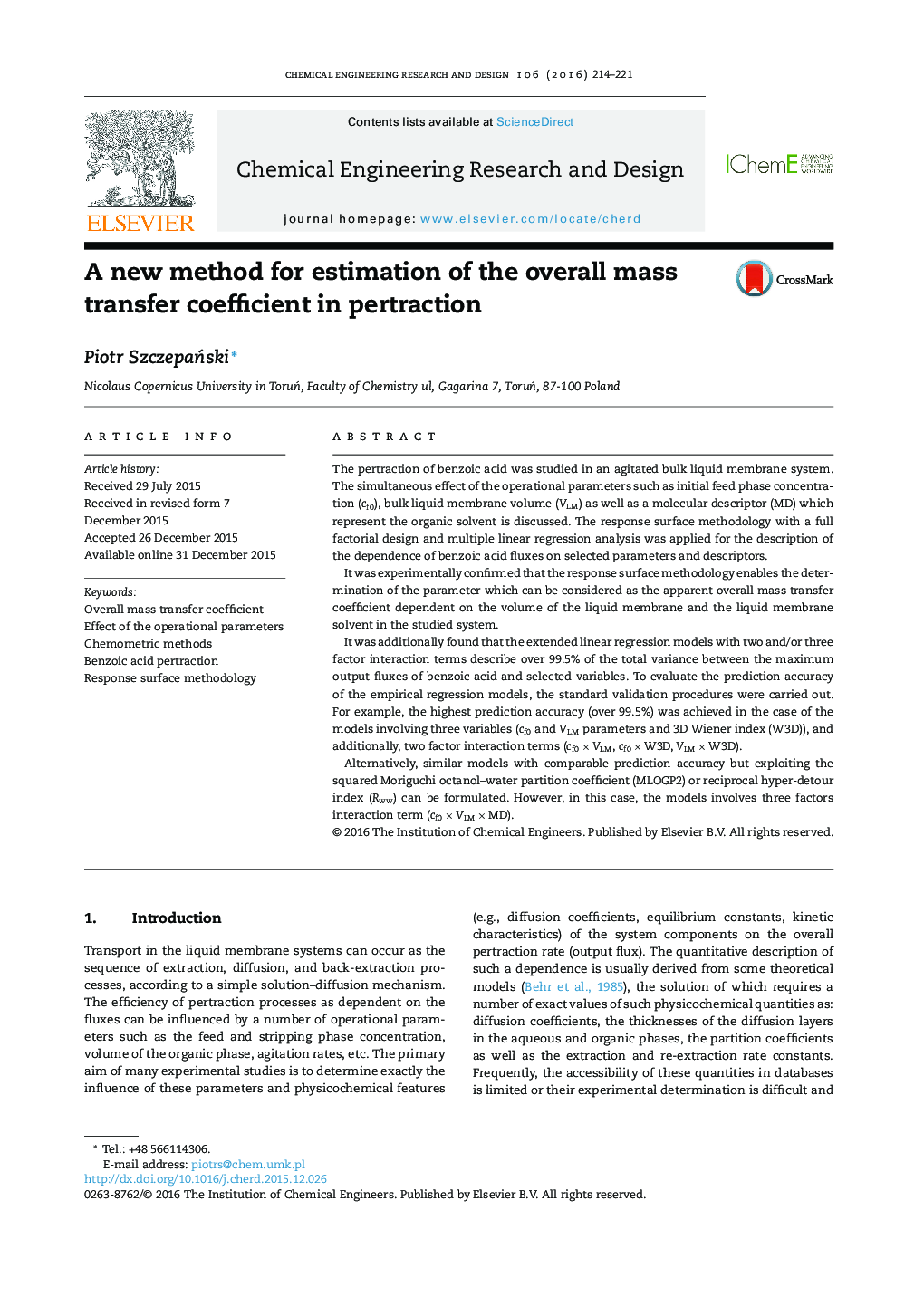| کد مقاله | کد نشریه | سال انتشار | مقاله انگلیسی | نسخه تمام متن |
|---|---|---|---|---|
| 620889 | 1455162 | 2016 | 8 صفحه PDF | دانلود رایگان |
• A new method for estimation of the overall mass transfer coefficient is presented.
• The simultaneous influence of the operational parameters on fluxes was examined.
• The response surface methodology was applied.
• The topological indices were used for describing the solvent effect.
• The validation of the models was conducted.
The pertraction of benzoic acid was studied in an agitated bulk liquid membrane system. The simultaneous effect of the operational parameters such as initial feed phase concentration (cf0), bulk liquid membrane volume (VLM) as well as a molecular descriptor (MD) which represent the organic solvent is discussed. The response surface methodology with a full factorial design and multiple linear regression analysis was applied for the description of the dependence of benzoic acid fluxes on selected parameters and descriptors.It was experimentally confirmed that the response surface methodology enables the determination of the parameter which can be considered as the apparent overall mass transfer coefficient dependent on the volume of the liquid membrane and the liquid membrane solvent in the studied system.It was additionally found that the extended linear regression models with two and/or three factor interaction terms describe over 99.5% of the total variance between the maximum output fluxes of benzoic acid and selected variables. To evaluate the prediction accuracy of the empirical regression models, the standard validation procedures were carried out. For example, the highest prediction accuracy (over 99.5%) was achieved in the case of the models involving three variables (cf0 and VLM parameters and 3D Wiener index (W3D)), and additionally, two factor interaction terms (cf0 × VLM, cf0 × W3D, VLM × W3D).Alternatively, similar models with comparable prediction accuracy but exploiting the squared Moriguchi octanol–water partition coefficient (MLOGP2) or reciprocal hyper-detour index (Rww) can be formulated. However, in this case, the models involves three factors interaction term (cf0 × VLM × MD).
Figure optionsDownload high-quality image (85 K)Download as PowerPoint slide
Journal: Chemical Engineering Research and Design - Volume 106, February 2016, Pages 214–221
